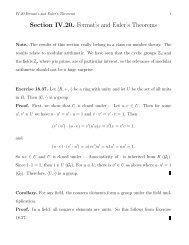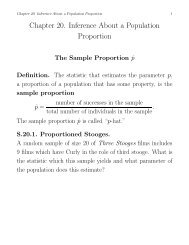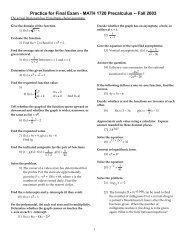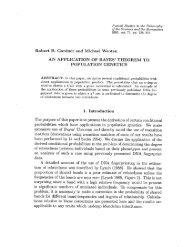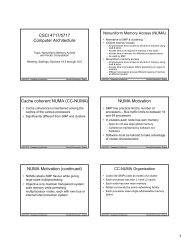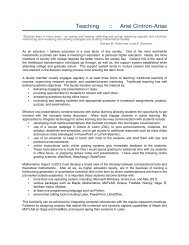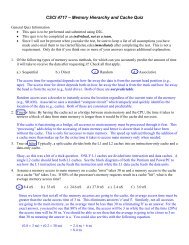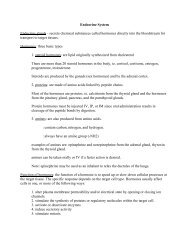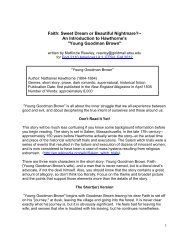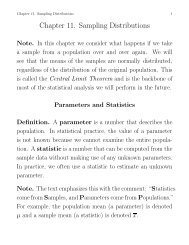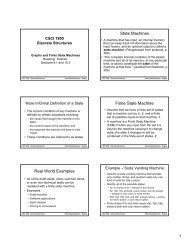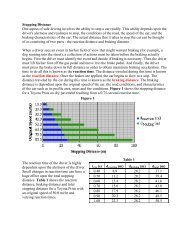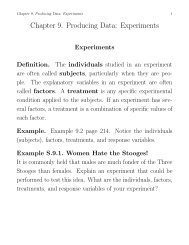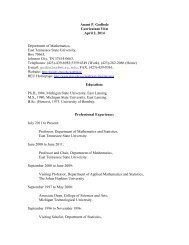Boolean Algebra - Etsu
Boolean Algebra - Etsu
Boolean Algebra - Etsu
You also want an ePaper? Increase the reach of your titles
YUMPU automatically turns print PDFs into web optimized ePapers that Google loves.
Chapter 5: <strong>Boolean</strong> <strong>Algebra</strong> 97expression is almost always possible. This is true for the OR gate as isshown with the following four rules for simplifying the OR function.First, what happens when one of the inputs to an OR gate is aconstant logic 0? It turns out that the logic 0 input drops out leavingthe remaining inputs to stand on their own. Notice that the two columnsin the truth table below are equivalent thus proving this rule.Rule: A + 0 = AA A + 00 0+0 = 01 1+0 = 1What about inputting a logic 1 to an OR gate? In this case, a logic 1forces the other operands into the OR gate to drop out. Notice that theoutput column (A + 1) is always equal to 1 regardless of what A equals.Therefore, the output of this gate will always be 1.Rule: A + 1 = 1A A + 10 0+1 = 11 1+1 = 1If the same operand is connected to all of the inputs of an OR gate,we find that the OR gate has no effect. Notice that the two columns inthe truth table below are equivalent thus proving this rule.A A + ARule: A + A = A 0 0+0 = 01 1+1 = 1Another case of simplification occurs when an operand is connectedto one input of a two-input OR gate and its inverse is connected to theother. In this case, either the operand is equal to a one or its inverse is.There is no other possibility. Therefore, at least one logic 1 isconnected to the inputs of the OR gate. This gives us an output of logic1 regardless of the inputs.A A + ARule: A + A = 1 0 0+1 = 11 1+0 = 15.5.3 AND RulesJust as with the OR gate, if either of the inputs to an AND gate is aconstant (logic 0 or logic 1) or if the two inputs are the same or inverses



